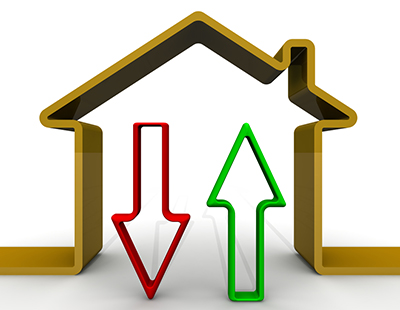Transactions will remain low, with the number of new buy to let buyers down by 27 per cent.
Total transactions in the UK housing market are expected to dip before gradually returning to around 1.2m by 2022 - still around half a million below their pre-credit crunch level.
Savills says people will continue to trade up the housing ladder less often as they struggle to accumulate equity and additional borrowing required, and first time buyers will remain heavily reliant on the Bank of Mum and Dad or government initiatives such as Help to Buy.
Cash buyers have become more dominant and this trend will continue.
They now account for some 34 per cent of all house purchases, and 45 per cent of the total value of transactions. Although expected to become more price conscious, they will continue to be the largest buyer group, as others struggle to access the market.
“Uncertainty over what Brexit means for the UK economy and how it will impact household finances will increasingly act as a drag on house prices,” says Lucian Cook, Savills head of residential research.
“There is capacity for growth once we have greater clarity, but this will be constrained by rate rises and the corresponding ability to get mortgage debt, particularly in London and other higher value locations” he continues.
“Mortgage regulation, introduced in 2014, is likely to show its hand as interest rates rise.”
In London, average house prices – at £479,100 in August 2017, according to the Land Registry - are 12.9 times the average individual’s earnings. “The market has therefore become increasingly accessible only to more affluent, dual-income households, which will restrict potential future growth in the capital, and in turn act as a drag on its commuter belt” Savills says in its forecast document.
Beyond the Home Counties, house prices have risen more in line with incomes, leaving affordability far less stretched. The house price to income ratio in the North West is a much more modest 5.6. Coupled with a robust economic outlook and strong employment growth centred on Manchester, this will underpin the region’s housing market, the agency anticipates.
After rising by 70 per cent in the past decade, 3.4 times the UK average, house prices in London are expected to fall by two per cent next year, before levelling off in 2019. Net five year growth of 7.1 per cent is forecast across the five years.
It is the city’s mainstream market that looks particularly stretched compared to other locations: first time buyer deposits are now 3.9 times the UK average, at £99,753; the average stamp duty bill, at £25,703, is 3.1 times that paid across England; and the average mortgaged home mover household income is £91,329, 66 per cent higher than across the UK as a whole.
“London’s housing market has been pushing up against the limits of mortgage regulation and affordability for some time,” says Lawrence Bowles, Savills research analyst.
“The Brexit vote was the tipping point that slowed price growth. Weakened sentiment combined with expected interest rate rises now point to small, short term price falls next year. Greater economic and political certainty should trigger a return to growth in 2020, though this will be capped by borrowing constraints as gradual increases in the cost of mortgage debt impinge on affordability” he says.
By contrast, however, Savills forecasts that prime central areas of the capital will see 20.3 per cent rises in the five year period “assuming London retains its leading global city status.”
The more domestic, equity rich other prime London markets are also expected to outperform the mainstream, with growth forecast to total 10.2 per cent.

















%20A%20property%20tale%20for%20our%20times.png)








Join the conversation
Be the first to comment (please use the comment box below)
Please login to comment